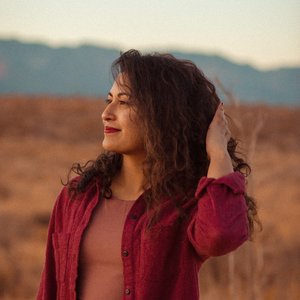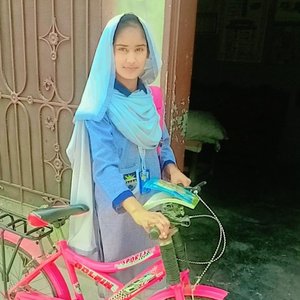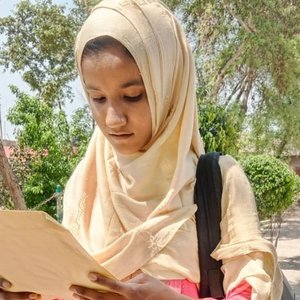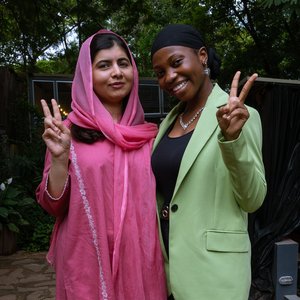Barriers students face to ADHD diagnosis and care
Jordan and Elina, two students living in the U.S., share their paths to ADHD diagnosis and how the condition has affected their lives. (Courtesy of Jordan Sanchez and Elina Itugot)
Jordan and Elina, two students living in the U.S., share their paths to ADHD diagnosis and how the condition has affected their lives.
Before she was diagnosed with attention-deficit/hyperactivity disorder (ADHD), 20-year-old Jordan Sanchez (she/her) didn’t know what the condition might look like in someone like her. “I had heard of ADHD before in a way that most people have — it’s a young White boy who can’t sit still in elementary school,” she says. “I was never aware of how it could manifest differently in girls.”
ADHD is a developmental disorder marked by ongoing inattention and/or hyperactivity and impulsivity. To date, more than 6.1 million children ages 2–7 in the U.S. have been diagnosed with the condition, representing 9.4% of the age group. But though the disease is common among young people, gender and racial stereotypes are causing girls and people of colour to be underdiagnosed compared to boys and White children. For girls and non-boys, less noticeable ADHD symptoms like inattentiveness, forgetfulness and problems with organisation often escape notice. These students may also try harder than their male counterparts to compensate for and cover up their symptoms, also contributing to underdiagnosis.
Jordan, a student at Harvard University, had many childhood behaviours she later understood were symptoms of undiagnosed ADHD. But for years her accomplishments belied her struggles, making it hard for adults to recognize the condition and offer her support. “Many symptoms of my ADHD were actually celebrated,” she shares. “My teachers, friends and family always called me ‘creative’ and ‘entrepreneurial.’ The countless books and plays I wrote and businesses I made in my K–12 career seemed impressive. … No one ever saw these scattered passion projects as a sign of something larger.”
“I felt I needed to prove to my parents that I was struggling,” says Elina Itugot (she/they), a 21-year-old film student at the Savannah College of Art & Design who also has ADHD. “I just felt like they didn’t understand it — like if I told them ‘I’m struggling with this’ they would say ‘yeah, everyone struggles with that. You’ll work through it.’”
For Elina, alternate resources like the YouTube channel How to ADHD were key to helping them understand the nuances of the condition and how it might appear in young people who weren’t boys. (Courtesy of Elina Itugot)
Elina grew up in the Philippines, where she says she received little information in school about mental health conditions and care. But when Elina started struggling in school, she conducted research online to figure out what was wrong. After moving to the U.S. at age 12, she decided to seek help from a psychiatrist.
Like Jordan, Elina had difficulty squaring their initial diagnosis with what they’d learned about ADHD from online research. “The first thing I said was, ‘Are you sure?,’” Elina shares. “On the internet, a lot of resources about kids with ADHD have an image of a hyperactive boy that’s fidgeting all the time. And I’m like, that’s not me.” For Elina, alternate resources like the YouTube channel How to ADHD were key to helping them understand the nuances of the condition and how it might appear in young people who weren’t boys.
“On the internet, a lot of resources about kids with ADHD have an image of a hyperactive boy that’s fidgeting all the time. And I’m like, that’s not me.”
Jordan, too, found the information she needed on social media after confiding in a friend that the shift to online learning amid the COVID-19 pandemic had made it extremely difficult for her to focus. Her friend, who’d been recently diagnosed with ADHD, recommended she look into the condition to see if her symptoms fit. “TikTok was where I started to learn more about the various ways ADHD manifests itself,” she says. Through creators like Wawa Gatheru, Roxie Wilson, Adesuwa Joseph, Jordan learned about how symptoms could appear differently in girls — especially Black girls who often feel pressure to overachieve in order to not confirm racist stereotypes.
Over time, Jordan became sure that she was exhibiting symptoms of ADHD. But the process of getting the care she needed was more fraught than she expected. “Getting my ADHD diagnosis was the hardest thing I’ve experienced in my entire life,” says Jordan, who began seeing a therapist in April 2020 and didn’t receive an official diagnosis until January 2022, when she was 20 years old. By that point, she had spoken with six health care professionals including physicians, therapists, psychiatrists and nurse practitioners.
Throughout this process, Jordan struggled to be taken seriously by White professionals who perceived her as strong, independent and high-achieving — a stereotype about Black women and girls that makes them less likely to seek and receive mental health support. “When I was communicating the struggles I faced, they still saw me as the Independent, High-Achieving Black Woman,” Jordan shares. “To them, my struggles were supposed to be opportunities to prove my resilience, not challenges they were supposed to assist me in solving.” Black girls with ADHD are routinely under-diagnosed in the U.S. due to racial bias in educators and health care providers and lack of access to care. One study showed that Black children in the are 70% less likely to receive an ADHD diagnosis than similarly-behaved White children.
For Jordan, finally starting ADHD medication felt like the culmination of several years’ struggle and the beginning of a new, more peaceful chapter. “The biggest difference was actually starting medication,” Jordan shares. “It was suddenly easy to get myself to do work after hating myself for not being able to in the past.”
“The biggest difference was actually starting medication. It was suddenly easy to get myself to do work after hating myself for not being able to in the past.”
But for Elina, the diagnosis process was so quick they worried their doctors hadn’t taken the time to really listen. Within a week of speaking to a psychiatrist about their symptoms, they received an ADHD diagnosis and a prescription for medication — a step they weren’t sure they were ready to take. “A lot of times I felt like it was my responsibility to really think about whether or not I should be on medication or not,” Elina shares. “I tried a lot of [different ADHD medications] and a lot of them had really bad side effects. So that also gave me the impression that I need to be really careful, and that it's my responsibility to research them beforehand because a lot of times the psychiatrists don't really mention it unless you ask them.”
Due to a lack of mental health resources, education and awareness in schools, many young people like Elina are left to fend for themselves when it comes to ADHD diagnosis and treatment. A 2019 study in the U.S. found that one in three students with ADHD received no school-based interventions or support programmes despite indicators that they were struggling academically. The gap was especially large for young people from non-English-speaking or low-income families.
Elina is still trying to figure out what treatment option is best for her. But for the time being, there are systemic changes in school environments she says would go a long way towards supporting students with ADHD. “People really need to think about why they pressure students to take on so much workload,” Elina says. “I’m noticing a lot with my filmmaker peers. In ten weeks they want to work on three or five film projects while making their own project too — those standards are hard not just for people with ADHD, but I think for everyone.” Jordan agrees that extending compassion to any student struggling with workload is key to making young people with ADHD feel welcome in classrooms. “Don’t equate your students ability to complete their homework with their quality of character,” Jordan says. “If you notice a student struggling with time management or organization, help them. School settings are for supporting students, not punishing them.”
“My ADHD diagnosis journey has inspired my own friends to speak to their doctors about getting evaluated,” Jordan shares. (Courtesy of Jordan Sanchez)
Today on her TikTok, Jordan is creating the resources she wished she’d had when she was younger — from advice on getting diagnosed with ADHD to tips for choosing a therapist. Sharing her story has helped Jordan connect with other young people with ADHD, an experience she says has made clear to her the importance of creating support networks among students. “Find one to two people who will tirelessly support you in your diagnosis journey,” she advises. “Look out for your friends and be open about your own process; my ADHD diagnosis journey has inspired my own friends to speak to their doctors about getting evaluated.”
“Don’t isolate yourself in the process,” Elina agrees. Her advice to other young people with ADHD is to tap into the support parents, teachers and friends can offer — even if you’re worried about how they might respond. “They would want to know what's going on,” she says. “Even though they may not say the things that you want them to say, it’s still good to inform them so that they can try to help you.”
 Read more
Read more













